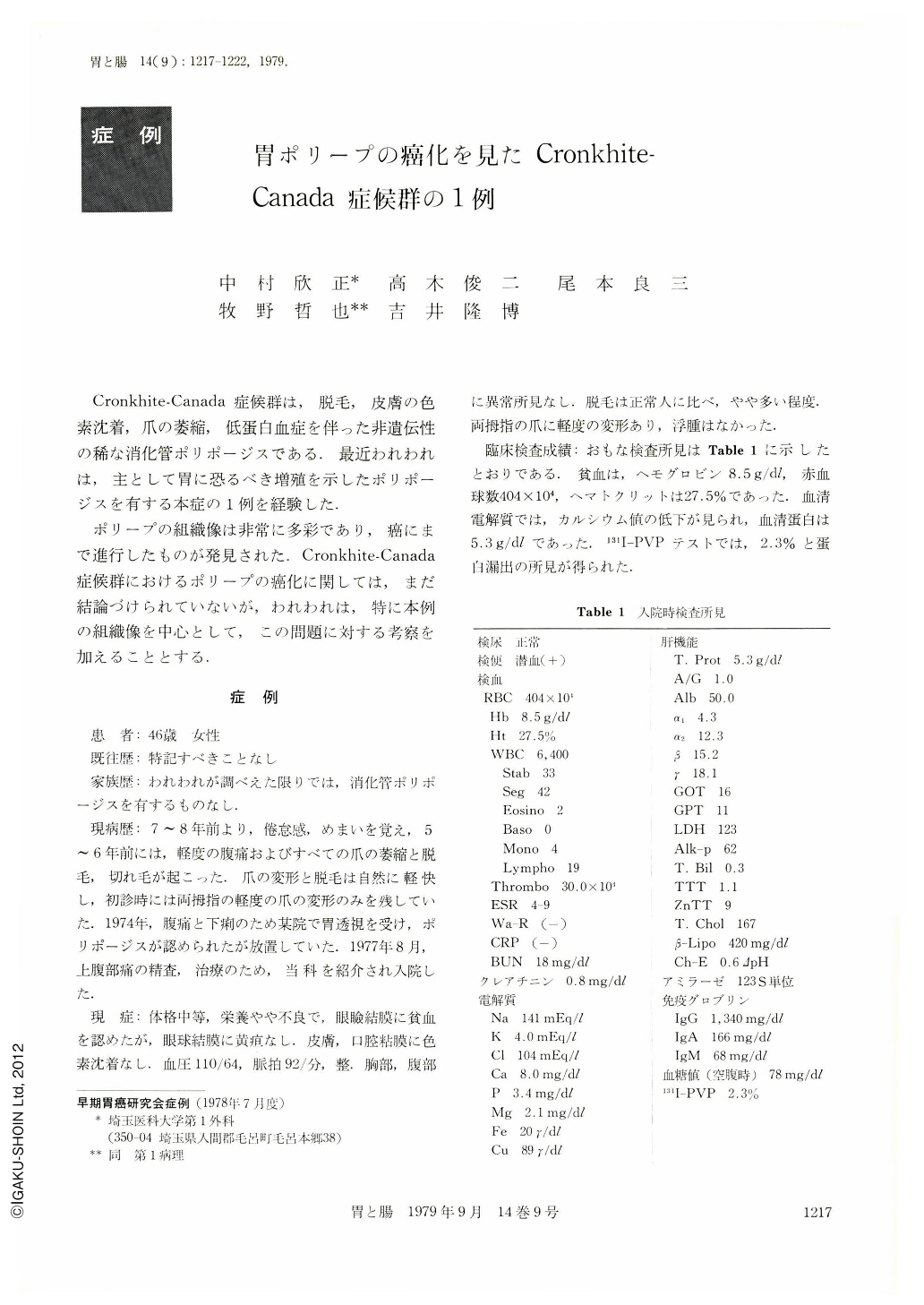Japanese
English
- 有料閲覧
- Abstract 文献概要
- 1ページ目 Look Inside
Cronkhite-Canada症候群は,脱毛,皮膚の色素沈着,爪の萎縮,低蛋白血症を伴った非遺伝性の稀な消化管ポリポージスである.最近われわれは,主として胃に恐るべき増殖を示したポリポージスを有する本症の1例を経験した.
ポリープの組織像は非常に多彩であり,癌にまで進行したものが発見された.Cronkhite-Canada症候群におけるポリープの癌化に関しては,まだ結論づけられていないが,われわれは,特に本例の組織像を中心として,この問題に対する考察を加えることとする.
A case of a 46 year-old housewife with Cronkhite-Canada syndrome is described.
Two years before admission, the patient noticed loss of her hair and abnormalities of her thumb nails associated with diarrhea and epigastralgia. Those symptoms except upper abdominal pain had disappeared spontaneously on admission.
Laboratory examinations revealed severe anemia with a hemogrobin level of 8.5gr/dl, hypoproteinemia with a serum total protein level of 5.3gr/dl and a positive 131I-PVP test.
Upper gastrointestinal series and gastroscopy showed numerous polyps involving the stomach. However, no polyps were demonstrated in the small intestine or in the colon and rectum.
Total gastrectomy was performed. The inner surface of the stomach was entirely covered with polyps which were morphologicaly classified into three types: i.e., finger-like, cauliflower-like and granulous polyps. Finger like polyps were the most prevalent in number and were approximately 0.5~3cm in length and 0.1~1.3cm in diameter. Histologically, they resembled juvenile polyps which consist of cystic dilatation of the glands, stomal edema and inflammatory cell infiltration. No malignant cells were found in these polyps.
Where the proliferation of epithelial cells were dominant, the polyp changed its shape from a fingerlike polyp into a cauliflower-like adenomatous polyp. In one of those polyps, some nests of malignant cells were found.
Malignant change of polyps seen in Cronkhite-Canada syndrome is still controversial. However, supposing from our observation, it would appear that a polyp of Cronkhite-Canada syndrome might change into adenocarcinoma if the polyp is adenomatous histologically.

Copyright © 1979, Igaku-Shoin Ltd. All rights reserved.


